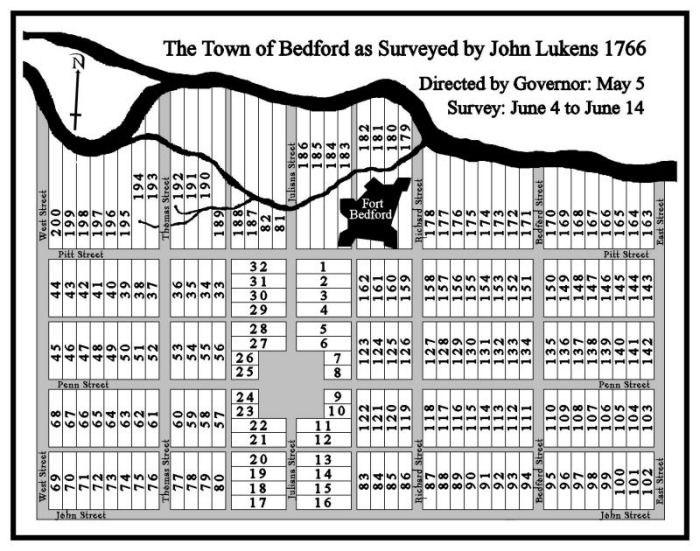


![]() How were towns traditionally founded in the past?
How were towns traditionally founded in the past?
1.) Usually a person (in most cases a man who was already engaged in what would be considered entrepreneurial pursuits) would locate a tract of land on which the town would stand. He would first purchase the tract of land.
2.) Then he would engage a surveyor to create a plat, i.e. a map showing the tract divided into lots defined by streets and alleys.
3.) He would give the town a name ~ usually, but not always, his own with the word 'town,' 'ville' or 'burg' appended to it.
4.) And then he would sell the lots to individual families or craftsmen who were interested in taking up residence or engaging in some sort of business in the new town.
![]() That is essentially the process that the Proprietaries of the province of Pennsylvania requested of the provincial Surveyor-General, John Lukens.
That is essentially the process that the Proprietaries of the province of Pennsylvania requested of the provincial Surveyor-General, John Lukens.
![]() Mr. Lukens carried out the directive given to him on 05 May 1766 by John Penn, Lieutenant Governor, and Proprietor of the province of Pennsylvania, to survey and lay out a new town in the frontier of Cumberland County.
Mr. Lukens carried out the directive given to him on 05 May 1766 by John Penn, Lieutenant Governor, and Proprietor of the province of Pennsylvania, to survey and lay out a new town in the frontier of Cumberland County.
1.) The first step in the process of founding the new town was accomplished by locating the tract; it would be within the Proprietary Manor of Bedford that had been established on 29 October 1761.
2.) At that time, Deputy Surveyor John Armstrong surveyed it for the Proprietaries, whose ownership of the tract accomplished the second step in the process.
3.) The third step was carried out by John Lukens between June 04 and 14, 1766 ~ during which time he performed the survey and drew up the plat map.
4.) The fourth step ~ giving the new town the name of Bedford ~ had already been done by John Penn. The final step of selling the lots was begun by Lukens who accepted applications for such while he made the survey.
![]() Thusly was the town of Bedford founded.
Thusly was the town of Bedford founded.
![]() Note: The image above is a modern interpretation of the Lukens survey.
Note: The image above is a modern interpretation of the Lukens survey.
